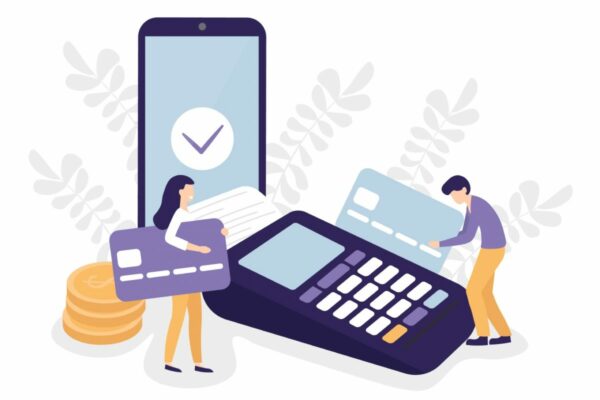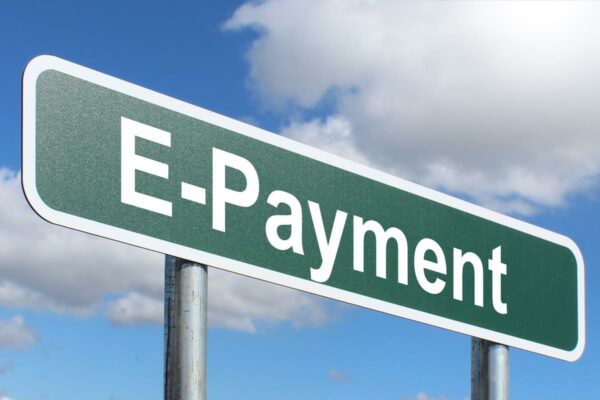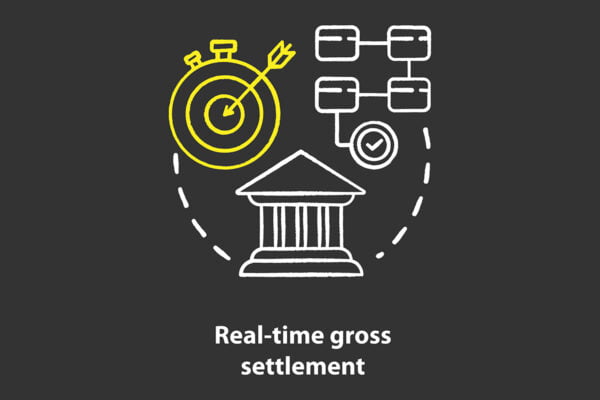RBI Payments Vision 2025: Increase Digital Transactions by 3X

An increase in Digital Transactions is a goal of the RBI Payments Vision
The Reserve Bank of India (RBI) has unveiled its ‘Payments Vision 2025’, which intends to boost the country’s e-payments ecosystem.
The Reserve Bank of India (RBI) has released a design for payment system regulation that intends to give customers quick, easy, and affordable electronic payment choices.
As part of its Vision 2025, the RBI outlined regulations for BigTech and FinTechs, as well as buy-now-pay-later (BNPL) systems and the creation of a central bank digital currency (CBDC).
According to the study, the volume of cheque-based payments will be less than 0.25 percent of all retail payments, and the number of digital payment transactions would increase by more than threefold.
About Payments Vision 2025
Payments Vision 2019-21: Payments Vision 2025 builds on Payments Vision 2019-21’s objectives.
It has been giving strategic guidance and an implementation plan for India’s payment and settlement systems to be developed.
According to industry players, the Reserve Bank’s Payments Vision 2025 strategy, which aims to increase the volume of digital payments, is progressive and aims to establish India as a global payments powerhouse. Payments Vision 2025, according to the RBI, aspires to deliver safe, secure, rapid, convenient, accessible, and inexpensive e-payment solutions to every customer.
The RBI produced its Payments Vision 2025 document in response to increased geopolitical concerns, which emphasizes ring-fencing domestic payment networks as well as the need to ensure domestic processing of payment transactions.

The theme of the RBI PAYMENT VISION is E-Payments for Everyone, Everywhere, Every time (4E’s)
Objective: Providing every user with safe, secure, quick, simple, accessible, and economical e-payment choices is the objective of RBI Payment Vision 2025.
Integrity, Inclusion, Innovation, Institutionalization, and Internationalization are the actions that will be undertaken in the run-up to 2025 as part of Vision 2025.
Following are the key takeaways:
- Increase the number of digital transactions while encouraging innovation, inclusivity, and globalization: The vision document’s central subject is 4Es (Electronic Payments for Everyone, Everywhere, Every Time), with five anchor goals of integrity, inclusivity, innovation, institutionalization, and internationalization. The RBI intends to investigate a UPI-like system for cards, enabling networks for IoT (Internet of Things)-based payments and interoperability for contactless transit card payments in the offline mode, and develop payment systems for merchants in order to stimulate innovation.

- Three-fold jump: It aims for a three-fold increase in the number of digital payments, as well as an increase in debit card usage and less cash in circulation. The RBI expects a 3x increase in digital payment transactions, a 50% increase in UPI average annualized growth, an 8x increase in payment transaction turnover vs. GDP, debit card usage to surpass credit card usage in terms of value, and a meaningful reduction in cash in circulation as a percent of GDP as a result of the new initiatives. Furthermore, cheque-based payments are predicted to account for less than 0.25 percent of total retail payments, whereas Prepaid Payment Instruments are expected to grow by 150 percent.
The RBI also anticipates a 50 percent CAGR in the number of registered customers for mobile-based transactions.
- Geotagging of digital payment: The RBI document proposes revising criteria for prepaid payment instruments (PPIs), including closed system PPIs, and enabling geotagging of digital payment infrastructure and transactions.
- Link credit cards and banking product credit components to UPI: Users can only link their bank account (savings/current account) and debit card to the UPI virtual payment address at the moment (VPA). The potential of integrating credit cards and credit components of banking products into UPI will be investigated in order to provide customers with more options and convenience when making payments using UPI. The RBI has already permitted the connecting of Rupay cards to UPI in this regard.
“Internationalization of UPI, RTGS, NEFT, and RuPay cards is one of the most essential forward-looking projects,” stated Rajesh Mirjankar, MD and CEO of Kiya.ai. “Those countries with bilateral agreements, especially those involving the USD, EURO, and GBP, will considerably benefit Indian residents and overseas counterparts by allowing online realization at reduced rates,” he added.
According to the RBI, overall digital payments surged by 216 percent in volume and 10% in value in March 2022 compared to March 2019. Payment systems process about 26 crore digital payment transactions each day, with the Unified Payments Interface (UPI) system handling more than two-thirds of them.
- Cheque Truncation System (CTS): Enhancements to the Cheque Truncation System, including One Nation One Grid clearing and settlement, and the creation of a payment system for processing online merchant payments using the internet and mobile banking are among the other proposed.
- BNPL rules and FinTech regulations: In the payments arena, the RBI also recommended regulating BigTechs and FinTechs. The RBI intends to implement distinct laws for BNPL due to the unfettered growth of Buy Now Pay Later, which could pose a risk to clients. Without adequate rules, the RBI feels that the growing dominance of BigTechs and FinTechs in the payments ecosystem poses a risk to not just financial stability and market integrity, but also to customers in terms of debt traps, misselling, and data breaches, among other things.

-
As a result, a discussion paper about their domestic incorporation, reporting, and data use will be released soon. The RBI would use activity- and entity-based hybrid regulations as a strategy.
“A number of use cases would be studied and developed to bring in additional savings in domestic and cross-border payment processing and settlement via CBDC,” according to the Reserve Bank of India.” It will also support global outreach initiatives to broaden the reach of domestic payment systems.
The central bank is aiming to regulate big-tech and fin-tech companies in the payments area since they are enrolling new users. In a speech earlier this year, RBI Governor Shaktikanta Das cautioned that big-tech companies that have entered the financial services business could be another source of financial system upheaval.
“Unfair practices, data protection, documentation, transparency, conduct, and violations of license limits have all been raised as a result of the distribution of financial services through digital channels, such as lending via online platforms and mobile apps,” he said.
- NEFT payments get a boost: The National Electronic Funds Transfer (NEFT) system is currently operational at half-hourly intervals throughout the day and is available around the clock throughout the year. “The frequency of batches in NEFT shall be evaluated and enhanced to further reduce the settlement risk as well as to improve efficiency by making payments near-real-time,” the document stated.
Its specialized initiatives also include the implementation of a payee name look-up service for other payment transfer systems like NEFT, Real Time Gross Settlement (RTGS), and Immediate Payment Service (IMPS). Only UPI now allows the payer to double-check and validate the account holder’s name before completing the transaction.
- Charges for digital payments: The Reserve Bank would also conduct a thorough examination of all areas of charges associated with various digital payment methods. The costs of digital payment services are now absorbed by one or more payment system participants (switching fees, interchange fees, etc.) or passed on to merchants (Merchant Discount Rate) or customers (customer charges).

A thorough examination of all areas of charges associated with various digital payment channels will be carried out. In a research note, Emkay Global stated, “We expect this review will result in somewhat higher credit card and wallet MDRs, as well as the implementation of MDR on UPI to at least cover the cost.”
It was also said that the viability of expanding RTGS to settle transactions in key trade currencies like the dollar, pound, and euro would be investigated via bilateral or multilateral agreements.
During the Vision period, a number of initiatives were proposed:
- Cheque-based payments must account for less than 0.25 percent of total retail payments;
- Increase in the number of digital payment transactions by more than thrice;
- UPI will expand by 50% on an annualized basis, whereas IMPS and NEFT will grow by 20%.
- Increase in payment transaction volume as a percentage of GDP to 8%;
- Debit card transactions at the point of sale increased by 20%;
- In terms of value, debit cards will overtake credit cards.
- PPI transactions increased by 150 percent;
- The infrastructure for accepting credit cards would be expanded to a capacity of 250 lakh;
- Increase in the number of registered customers for mobile-based transactions by 50% CAGR;
- Cash in circulation (CIC) reduction as a percentage of GDP.
Integrity, inclusivity, innovation, institutionalization, and internationalization are five main topics in the vision document, which was created after consultation with key stakeholders (5Is). The brochure outlines 47 particular activities as well as 10 predicted outcomes for the next few years.
By 2025, the central bank wants to triple the number of digital payment transactions and reduce the volume of cheque-based payments to less than 0.5% of total retail payments. The study also forecasts a 50 percent yearly growth in UPI payments and a 20 percent annual growth in IMPS and National Electronic Funds Transfer (NEFT) (NEFT).
The RBI will try to reduce the amount of cash in circulation as a percentage of GDP as part of its drive towards digital payments (GDP). It also plans to double the number of registered users for mobile-based transactions by 2025, with a compounded annual growth rate (CAGR) of 50%.
The paper also states the central bank’s goal of growing debit card transactions at a point of sale (PoS) by 20% and expanding card acceptance infrastructure to 250 lakh touchpoints across the country. All of these programs as well as the RBI’s initiative to ensure that debit card usage surpasses credit card usage in terms of value by 2025 are included in the document.
Big Push for Electronic Payments:
As it prepares for the next development of the space, the RBI will implement 47 initiatives to streamline the country’s e-payments infrastructure. Alternative authentication mechanisms, such as biometrics and digital tokens, are being used to authenticate users in addition to OTPs.

In addition, the central bank will promote the use of legal entity identification (LEIs) to facilitate cross-border payments and filter sanctioned companies. The LEI is an alphanumeric identifier that is used to uniquely identify parties engaged in a financial transaction and to track payments more efficiently.
The RBI intends to improve the scalability of payment systems as part of the effort. The RBI stated in the document that it intends to evaluate and expand the number of batches in which NEFTs are processed.
The central bank will look into methods for mandating domestic processing of payment transactions as part of the objective. In light of rising geopolitical dangers, the decision was made. The RBI also stated that it will conduct research into the potential of establishing a digital payments protection fund (DPPF), which will give security to cheated customers and payment instrument issuers.
In addition, the RBI will establish a framework for geo-tagging payment system touch points across India. It has already started collecting data on the coordinates of payment infrastructure across the country as part of this. The goal of the move is to determine the level of digital payment adoption across the country.
RBI appears to be focusing on big internet companies and their “increasingly dominant role.” The RBI stated in the vision statement that it will issue a discussion paper on the need for ‘proportionate regulation’ of big IT and fintech companies. This presentation will cover a variety of topics, including domestic incorporation and data utilization, among others.
Charges for all payment systems will also be evaluated by the authorities. The document stated that “a full examination of all elements relating to costs associated in various channels of digital payments will be done.
Use of Technology:
A provision in the Vision 2025 paper calls for the creation of a framework for the internet of things (IoT)-based payment systems, which would allow customers to pay using connected devices other than their phones and tablets. In addition, the RBI plans to develop a new system for processing payments made through the internet and mobile banking services. These services are currently delivered through payment gateways and other aggregators.
The Payment and Settlement Systems (PSS) Act will also be thoroughly reviewed by the RBI. A payments advisory council (PAC) will be established by the central bank to assist the board in the regulation and supervision of payment and settlement systems (BPSS). Representatives from startups, consumer groups, and digital payment providers, among others, will make up the PAC.
The feasibility of expanding RTGS to settle transactions in major trade currencies including the dollar, pound, and euro will also be investigated via bilateral or multilateral agreements, according to the document.

The Reserve Bank of India (RBI) also stated that it is planning to introduce a central bank digital currency (CBDC) in the country. ‘Various use cases will be investigated to bring in further savings in domestic and cross-border payment processing and settlement using CBDCs,’ the statement continued.
In May of this year, UPI registered more than 595 Cr transactions worth INR 10.4 Lakh Cr, according to the latest figures
Significance of the move of RBI PAYMENT VISION 2025:
- Ease of use and convenience: It will provide consumers with reasonable payment choices that can be accessed at any time and from any location.
- Digital society: The digital society is a journey toward a cashless and cardless society.
- Global leader: India’s position as a global leader in the digital payments arena will be strengthened as a result of this.
- Increase in mobile banking users: As a result of the shift in customer behavior toward digital and touchless ways of payment, which is partly attributable to the CoVID, there has been a 50 percent increase in mobile banking users, showing that first-time users have been brought into the digital fold.
- Expanding RTGS: The RBI will investigate the viability of expanding RTGS to settle transactions in important trade currencies like the dollar, the pound, and the euro, as well as bilateral and multilateral agreements.
Issues/ Challenges related to RBI PAYMENT VISION 2025:
- Geopolitical risks: In light of rising geopolitical dangers, the document also discusses ring-fencing domestic payment networks, including the necessity to enforce domestic processing of payment transactions.
- Frauds: As more people use digital payment methods, there will be an increase in digital payment fraud. Several people are still skeptical of mobile wallets as a secure payment method. For many clients, the ability to pay with credit or debit cards is secondary to the ability to pay with cash.
- Domestic storage of payments data: Banks and non-bank PSOs are permitted to process payment transactions outside of the United States under certain conditions.
- Charges on digital payments: The Reserve Bank would also conduct a thorough examination of all areas of charges associated with various digital payment channels.
- Cyber Security Risks People are even more hesitant to use cashless transactions because of the underlying cybersecurity dangers, such as security breaches. Hackers are developing new approaches in the same way that the industry innovates and provides new kinds of digital payments.
More than 60% of Indians now use mobile and online banking to conduct financial transactions. In the post-Covid age, many people wish to keep using digital payments. However, 4 out of 5 payments are still made in cash, which is due in part to a lack of internet availability and penetration.
Way Forward:
- Input from various stakeholders: The RBI’s Board for Regulation and Supervision of Payment and Settlement Systems provided direction in preparing this document, which was based on input from numerous stakeholders.
- CBDC (Central Bank Digital Currencies): CBDC has gained a lot of traction, with 86 percent of central banks around the world looking at its viability for cross-border transactions as well as internal benefits. CBDC is also a focus for the G20 as part of their priority initiative to improve cross-border payments.
Views from Experts on RBI PAYMENT VISION 2025:
According to the statement, the RBI wants to “extend the digital payment ecosystem to cover domestic and international payments, stimulate user involvement and security, enable alternative payment options, lower transaction costs, and regulate BigTechs/FinTechs.”
“We consider that linking credit cards to UPI is advantageous to spending growth, but that non-Rupay card acceptance will be limited if MDR is not adopted.” Additionally, lowering the MDR to boost affordability could impact card/wallet companies like Paytm and SBI Cards.
Monoline card businesses may be at risk as a result of the RBI’s goal to increase debit card usage. Any severe requirements for BNPL may slow growth in the short term, but they should be beneficial in the long run, according to Emkay Global.
According to the report, the Reserve Bank of India‘s Payments Vision 2025 will “have a significant impact on India’s payment ecosystem, paving the way for a safer, more secure, and seamless payment infrastructure.”

This study will serve as a roadmap for all payment participants, FinTechs, and other stakeholders, encouraging them to improve their skills by aligning with the RBI’s broad objectives.” AGS Transact Technologies Limited Chairman and CEO Ravi B Goyal commented.
“The Reserve Bank of India’s Payment Vision 2025 strategy is to accelerate India’s digital payments growth and transform it into a global digital payments behemoth. It is a cutting-edge digital payment initiative. Customers, banks, and Indian fintech startups will all gain from it. The RBI has democratized payments in India through programs like UPI. Payments will be available for ‘Everyone, Everywhere, Every Time’ under the 2025 vision, providing Indian payment systems worldwide reach while keeping them safe, secure, fast, simple, and affordable, according to Adhil Shetty, CEO of Bank bazaar.
“Through technological advancements, a flexible regulatory framework, and extensive customer uptake, the Previous RBI measures provided a boost, resulting in a significant surge in digital payments, including contactless and internet payments.” Cash withdrawals and digital payments are now competing for market dominance. “During the outbreak, retailers’ inclination for POS, enhanced interoperability, adoption of UPI, and novel technologies like SoftPOS, smart payment solutions for transit and toll,” Rustom Irani, MD, Hitachi Payment Services, stated.
Future of Digital Payments Ecosystem:
In India, the Covid-19 outbreak accelerated the adoption of digital payments. With the advent of various payment methods, India’s mobile wallet ecosystem is also expanding. Despite the underlying security problems, UPI, debit/credit cards, and other similar devices are becoming more popular in India. In this situation, millennials are the key growth drivers.

The government is working to promote these cutting-edge and innovative technology. A systematic penetration of these among the populace would significantly contribute to a cashless economy that is limitless and prolific. It is critical creating an ecosystem that encourages creative fintech firms and players to enter the digital payments industry with distinctive solutions. As a result, more Indians will choose a cashless and contactless economy. As the country’s digital transformation accelerates, various industries are attempting to promote cashless services, which would definitely improve India’s digital payment market.




